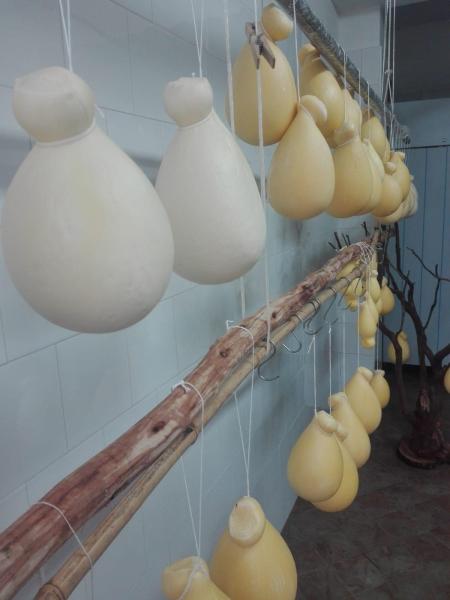- Read offline
- Access all content
- Build a list of your own favourites
- Search the contents with full-text search functionality
- ... and more!
Caciocavallo
hanged sheep or cow's milk cheese
The name of this pasta filata (stretched-curd) cheese shaped like a tear-drop means 'cheese on horseback' and in many ways it resembles provolone. The rind is edible.
The ancient Greeks are said to have invented the cheese (it resembles the modern Greek cheese kaiseri) when they colonised southern Italy. Hippocrates, the Father of Medicine, was the first to mention it in c. 500BC.
Today the finest version, Caciocavallo Silano, is made in Basilicata, Calabria, Campania, and Molise as well as in Puglia and has been given its protected status (DOP) to keep imitators at bay.
That said another special version is Puglia's Caciocavallo Podolico del Gargano, the so-called 'Parmesan of the South' made from milk from the Podolica cow that grazes on the grasses and herbs of the south, then aged in caves. It has a hard texture and strong, quite pungent flavour that pairs well with full-bodied wines.
It's in the Slow Food Presidium, along with the similar Caciocavallo Podolico della Basilicata as well as the recherché Caciocavallo di Agnone (Molise), and Caciocavalalo di Vacca Cinisara (Sicily).

Why Caciocavallo is on horseback, however, no one is quite sure. Most cheese scholars say it's because the curds were tied around the neck and dried hung over a beam, like saddlebags. Others say the original version was made of mare's milk.
The shape of the cheese is such that in Naples, if they say someone will "fare la fine del Caciocavallo", it means they're going to be hanged.
The Sicilians also make a version called caciucavaddu.
Images by Carmelo Speltino, Marcuscalabresus

